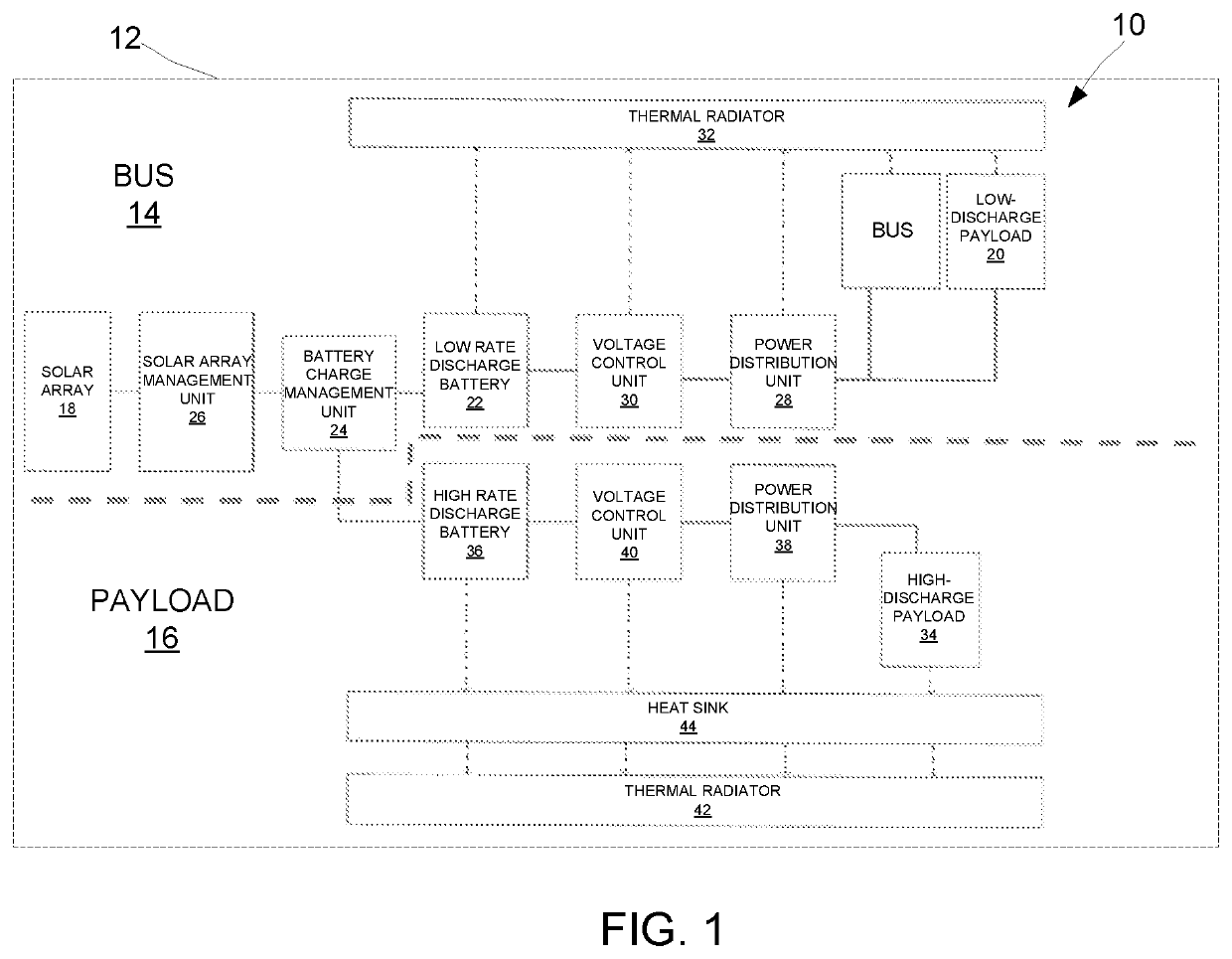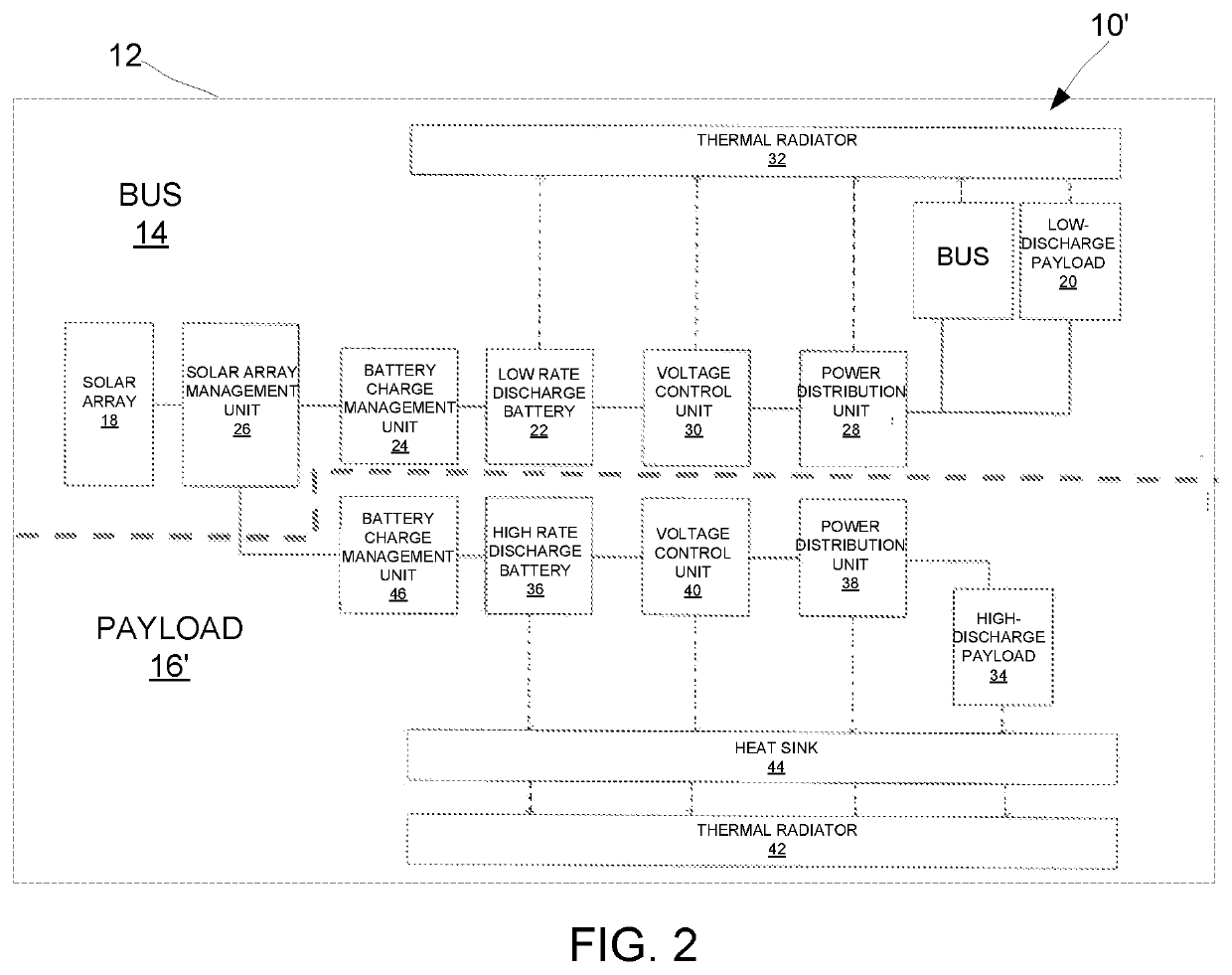Modular electrical power subsystem architecture
a subsystem and modular technology, applied in the field of spacecraft, can solve the problems of limited ability to reject, system modularity, and inability to adapt to different payload components, and achieve the effect of increasing the current discharge ra
- Summary
- Abstract
- Description
- Claims
- Application Information
AI Technical Summary
Benefits of technology
Problems solved by technology
Method used
Image
Examples
Embodiment Construction
[0042]The principles described herein have application in a spacecraft or spacecraft for aerospace deployment, generally outside of the atmosphere of a planet. The disclosure is more particularly directed to a small spacecraft, such as a spacecraft having a mass of 500 kilograms (1,100 pounds) or less. The principles described herein may be suitable for spacecrafts of any size. The spacecraft may be launched in an Earth orbit, such as in a low Earth orbit, by any suitable launch vehicle. In other exemplary applications, the principles described may be suitable for operation in any orbit, such as a high Earth orbit, geosynchronous Earth orbit, or even Deep Space. Any suitable payload may be carried by the spacecraft.
[0043]Referring first to FIG. 1, an electrical power system 10 for a spacecraft 12 is shown. The electrical power system 10 is configured to provide electrical power generation, storage, and distribution for the spacecraft 12. The electrical power system 10 includes a bus...
PUM
 Login to View More
Login to View More Abstract
Description
Claims
Application Information
 Login to View More
Login to View More - R&D
- Intellectual Property
- Life Sciences
- Materials
- Tech Scout
- Unparalleled Data Quality
- Higher Quality Content
- 60% Fewer Hallucinations
Browse by: Latest US Patents, China's latest patents, Technical Efficacy Thesaurus, Application Domain, Technology Topic, Popular Technical Reports.
© 2025 PatSnap. All rights reserved.Legal|Privacy policy|Modern Slavery Act Transparency Statement|Sitemap|About US| Contact US: help@patsnap.com



